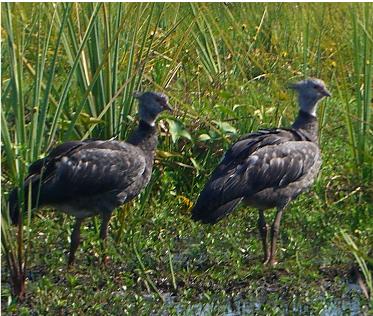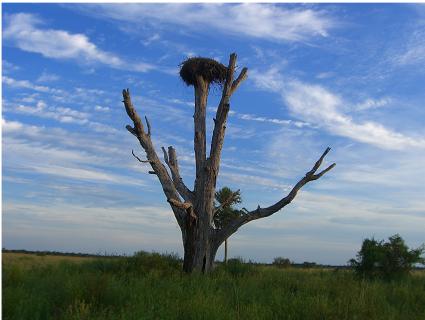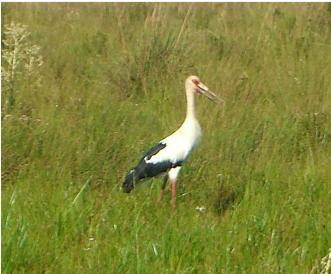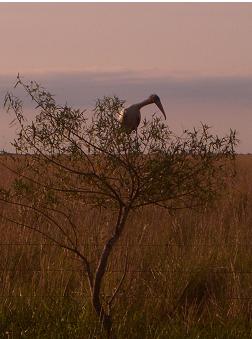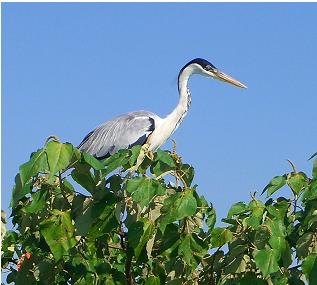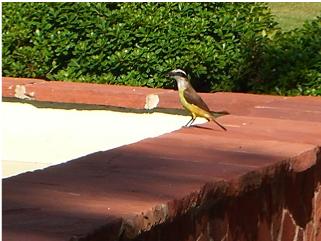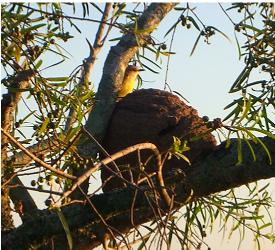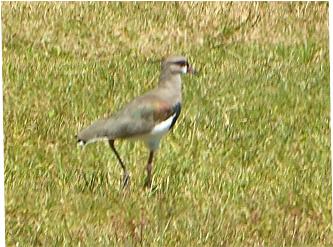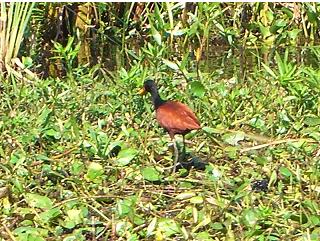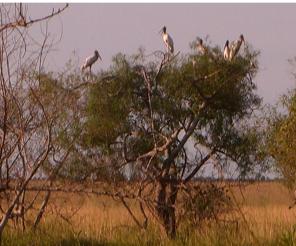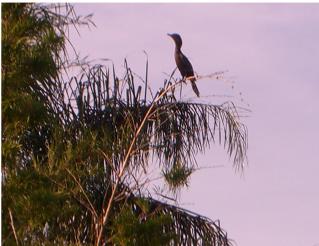What a surprise! We had made reservations to stay at estancia Rincon del Socorro which is on the edge of the Ibera marshlands. We were to fly to Posadas from where we would be transferred to the estancia. We certainly didn't know what we were getting ourselves into.
We were met by our driver Marcello who speaks very little English. This meshed well with our very limited Spanish. As a result, most communication was a word here or there and a lot of "Uh huhs" and "OKs". We were able to determine that we had a 3 1/2 hour ride to the estancia. That was surprise number 1. About 20 - 30 minutes into the ride we got surprise number 2. The remainder of the trip was on unpaved, mud ruts called a road.
The last 30 - 40 minutes of the ride were along the Ibera wetlands. We started seeing lots of birds. This is where Marcello came into his own. His knowledge of the birds is fantastic. We would stop every little bit and he would point out more birds and show them to us in his book.
Fortunately the truck was air conditioned. Unfortunately that was the only air conditioning. Our time at the estancia was "unseasonably" hot. We think it was at least as hot and possibly hotter than the jungle.
Having established the difficulty in getting there and the discomfort of the heat, let me say that IT SHOULDN'T BE MISSED! The wildlife, especially birds, are fabulous. We went on a walk to a couple of lagoons, a drive across some of the savannah, a boat ride on the main lagoon and a night ride to see the nocturnal life. Hopefully some of the pictures will show how wonderful this place is.
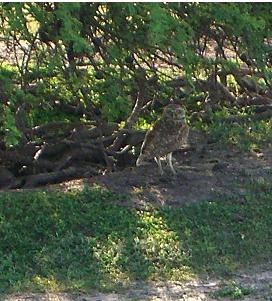
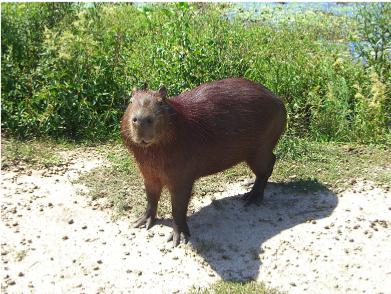
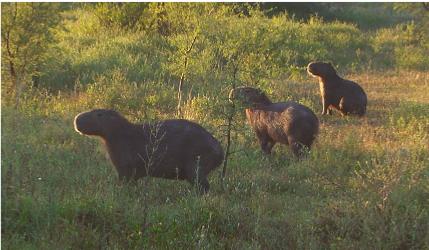
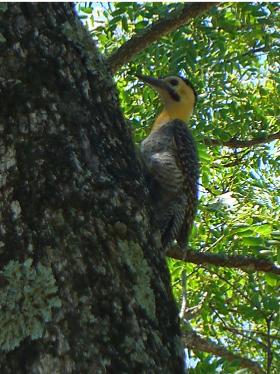
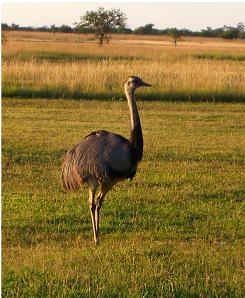
Probably the most startling animal we saw was the capybera. This is the world's largest rodent. A large one can weigh as much as 60 kg which is approximately 132 pounds. They live near the water and spend a lot of their time swimming or wallowing in the shallow, muddy areas.
There are over 300 species of birds in the Ibera marshland area. We saw a lot of birds but only a small portion of the vast varieties. Below left is a burrowing owl, in the center is a rhea and on the right is a golden breasted woodpecker.
There are a lot of LARGE birds in the marshland. We saw a number of large varieties but the largest is known locally as the Chaja. The English name is Southern Screamer. The Chaja warns all the animals when something unusual approaches. On the left are a pair of chajas and on the right is a chaja nest on the top of the tree..
We also saw a number of different large water birds. Below left is the Maguari Stork, in the center is the White Necked Heron and on the right is the Wood Stork.
And small birds like the kiskadee on the left, the tero on the right and the hornero in the center. The hornero is standing on his nest which he builds and uses year after year.
And a number of other species such as the jacana on the left, the jabiru in the center and the cormorant on the right.






